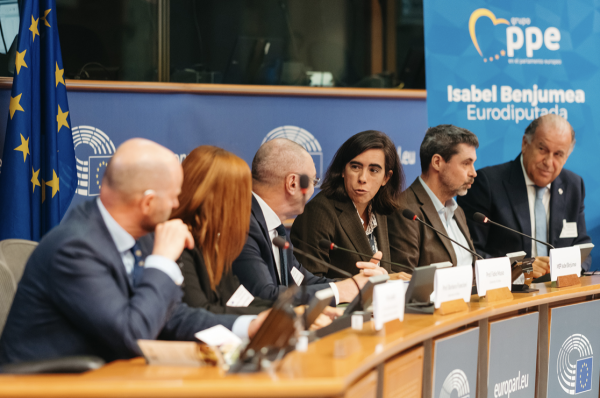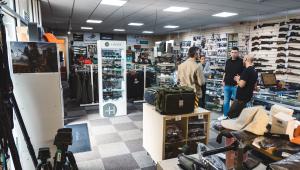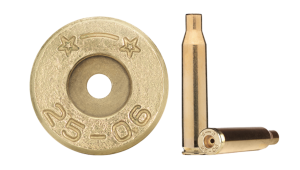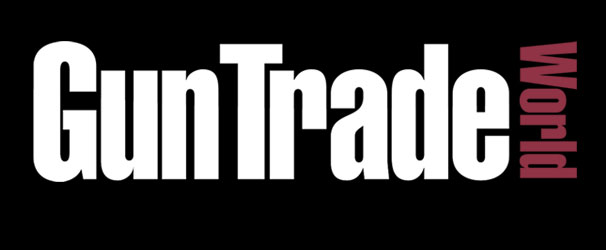New study reveals €180 billion contribution of hunting and shooting to Europe’s economy

The study, carried out by the University of Urbino, shows that the combined value of these activities represents an average of 0.99% of Gross Domestic Product (GDP). It highlights the direct and indirect role played by hunters, sport shooters, manufacturers, distributors and service providers across all EU Member States as well as Norway, Switzerland and the United Kingdom.
Opening the event, MEP Isabel Benjumea called for European decision-makers to take such evidence into account when shaping legislation. She said: “Hunting, sports shooting and their related sectors demonstrate strong benefits to society, which must be safeguarded, supported, and actively promoted.”
Delivering the keynote address, Frank Vassen of the European Commission emphasized the importance of the EU’s legal framework for conservation and noted that the new Nature Restoration Law will be central to safeguarding biodiversity for future generations.
The study was led by Professor Fabio Musso, who explained: “Building on the successful experience of a similar study conducted previously in Italy, we decided to embark on a more far-reaching project aimed at analysing the socio-economic impact of the civil firearms and ammunition sectors at European level. The result is a one-of-a-kind study, which provides a thorough assessment of the whole sector and its value in terms of turnover and employment.”
A sector with wide-ranging impact
The research reveals that hunters and sports shooters spend €96.3 billion annually, excluding firearms and ammunition purchases. Employment linked to this expenditure accounts for nearly 575,000 jobs across products and services.
The study also points to strong export performance. The European firearms industry posted a €1.36 billion trade surplus, while the ammunition sector recorded €399 million. Together, these industries employ more than 27,000 people directly, with 218 firearms companies generating €3.27 billion in turnover and 193 ammunition firms adding €2.54 billion. Auxiliary sectors and component manufacturers account for tens of thousands of additional jobs and billions in turnover.
The findings underline that the firearms and ammunition industries for civilian use, alongside their wider supply chains, are far from niche. Instead, they represent a robust contributor to European trade, employment and rural economies.
Industry and association reaction
Laurens Hoedemaker, President of FACE, said the findings confirm the broad value of Europe’s 7 million hunters: “This new study is great news for 7 million hunters across Europe, as it shows our socio-economic value is larger than previous studies have shown. FACE’s job is to ensure that we have strong frameworks at the European level to support hunters, including a healthy countryside that supports people and wildlife.”
Ian Bell, Chief Executive of BASC, underlined the significance for the UK: “Shooting enriches nature, boosts wellbeing, and supports the rural economy. In the UK alone, shooting contributes £3.3 billion GVA annually, manages over 7.6 million hectares for wildlife, and supports 146,700 jobs. Beyond the economic impact, shooting delivers friendship, a sense of purpose, and provides healthy wild game for the table – it is clearly of immense value to both people and nature.”
Thierry Jacobs, President of AFEMS, noted: “We thank the University of Urbino for such groundbreaking research shedding light on the significant socio-economic impact of our sector in Europe. We believe it is of fundamental importance having a better understanding of the weight of the sector as a whole, which contributes almost 1% to the GDP of Europe.”
Bertille Seive, President of IEACS, welcomed the findings: “There are many already existing studies conducted at national level on the socio-economic impact of our sector; however, unlike this study, they often differ from one another in both the scope and the methodology applied. This is certainly what makes the research by the University of Urbino rather unique.”
Luciano Rossi, President of the ISSF, added: “We are very pleased with this new study that shows the economic value of sports shooting. I particularly appreciate the holistic approach taken by authors of the study, because sports shooting and sports shooters are part of and connected to a successful industry and a strong shooting community.”
Future directions
While comprehensive, the report did not assess every aspect of hunting and shooting. Notably, it excluded the economic value of wild game meat as well as broader environmental and social benefits. These dimensions were highlighted in a UK case study and are expected to form part of further research.
The study’s conclusion is clear: Europe’s hunting and shooting sectors are not peripheral activities, but major economic contributors with deep cultural and social significance. They support rural communities, generate exports, and sustain a network of industries that together account for nearly €180 billion in value each year.
- Log in or register to post comments












